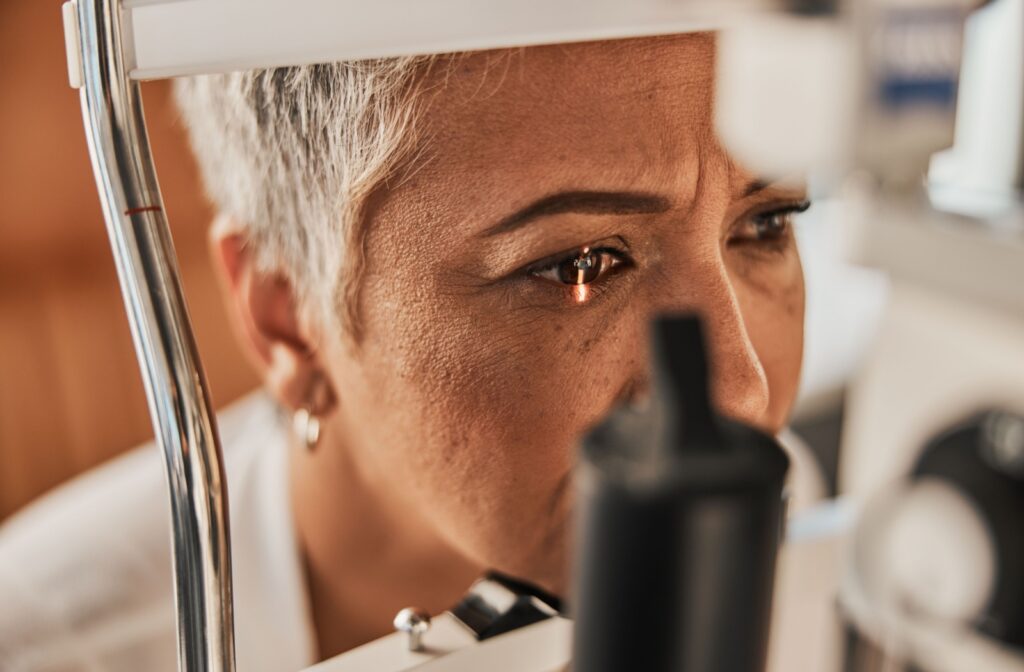Caring for your eyes and vision is an integral part of your overall health and wellness. While regular eye exams are essential, there are times when you shouldn’t wait for your next scheduled appointment. Changes in vision, discomfort, or difficulty seeing at night are just some of the signs that it’s time to visit your eye doctor.
Catching eye diseases or other eye-related issues before they develop into serious problems will not only save you a lot of trouble, but will help you preserve your quality of life. Here are five signs that indicate it’s time to see an eye doctor.
Blurred Vision or Sudden Vision Changes
If you notice sudden changes in your vision, such as blurred vision, double vision, or difficulty focusing, this could indicate underlying eye problems. Such changes might be caused by issues like refractive errors (nearsightedness, farsightedness, or astigmatism), which can often be corrected with glasses or contact lenses.
However, sudden vision changes could also signal more serious conditions that require prompt medical attention, so make sure to visit your eye doctor if you experience such symptoms.
Eye Pain or Discomfort
Persistent eye pain, discomfort, or irritation shouldn’t be ignored, as any of these could be symptoms of various eye conditions, including infections, dry eye syndrome, or even more severe issues like glaucoma or uveitis. Seeking timely evaluation and treatment can help alleviate discomfort and prevent potential complications.
Flashes of Light or Floaters
Seeing flashes of light or a sudden increase in floaters (tiny specks or strands that drift across your field of vision) can potentially indicate a vitreous detachment or, in some cases, a retinal tear or detachment. All of these conditions require immediate attention from an eye doctor in order to prevent potentially permanent vision loss.
Difficulty Seeing at Night or in Low Light
If you find it increasingly challenging to see clearly at night or in low-light conditions, this could be a sign of several eye conditions, such as cataracts or difficulty adjusting to changes in light. Early detection and management can help improve night vision and prevent further deterioration.
Gradual Loss of Peripheral Vision
A gradual loss of peripheral vision could be a sign of glaucoma, a group of eye conditions that damage the optic nerve. Glaucoma often develops slowly and without noticeable symptoms until significant vision loss occurs, so regular eye exams are crucial for detecting and managing glaucoma early, before it can affect your vision.
What Issues Can Eye Exams Detect?
Comprehensive eye exams conducted by an optometrist or ophthalmologist can detect a wide range of issues beyond just vision correction. These exams can uncover the following:
- Refractive Errors: Such as nearsightedness (myopia), farsightedness (hyperopia), and astigmatism.
- Eye Diseases: Some examples include glaucoma, cataracts, diabetic retinopathy, and age-related macular degeneration (AMD).
- Systemic Health Conditions: Some signs of general health conditions like diabetes, hypertension, and autoimmune diseases can manifest in the eyes.
- Eye Coordination and Focus Problems: Eye exams can also detect issues like strabismus (eye turn) or amblyopia (lazy eye), especially in children.
- Eye Function: This includes assessing how well your eyes work together, and how effectively they track moving objects and switch focus between objects at near and far distances.
When to Seek Emergency Medical Care
While many eye issues can be addressed during a scheduled eye exam, certain symptoms require immediate medical attention. Seek emergency medical care if you experience any of the following:
- Sudden Loss of Vision: Partial or complete loss of vision in one or both eyes.
- Severe Eye Pain: Intense, sharp, or persistent eye pain that is not relieved by over-the-counter pain relievers.
- Eye Trauma: Any injury to the eye, whether from a foreign object, chemical exposure, or blunt trauma.
- Sudden Onset of Flashes or Floaters: Especially if accompanied by a curtain-like shadow over your field of vision.
- Red Eye with Pain: Especially when combined with sensitivity to light, discharge, or reduced vision.
- Halos or Rainbow-Colored Rings: If you see halos or rings around sources of light, this could indicate acute glaucoma.
Prompt medical attention can help prevent permanent vision loss and preserve eye health in emergency situations.

Why Regular Eye Exams Are Important
Even if you aren’t experiencing any of these symptoms, regular eye exams are essential for maintaining good eye health. Comprehensive eye exams can detect vision problems and eye diseases early, before serious symptoms appear and while they’re still at their most treatable state. Depending on your age, family history, and overall health, your eye doctor will recommend how frequently you should have your eyes checked.
Come See Your Eye Doctor
Your vision is precious, and any changes or discomfort should prompt a visit to an eye doctor. Whether you’re experiencing sudden vision changes, eye pain, or other concerning symptoms, Griffin Optometric Group in San Clemente is here to provide expert care and personalized solutions.
Don’t wait—schedule an appointment today to ensure your eyes stay healthy and your vision remains clear.




